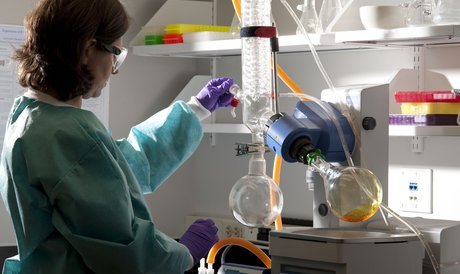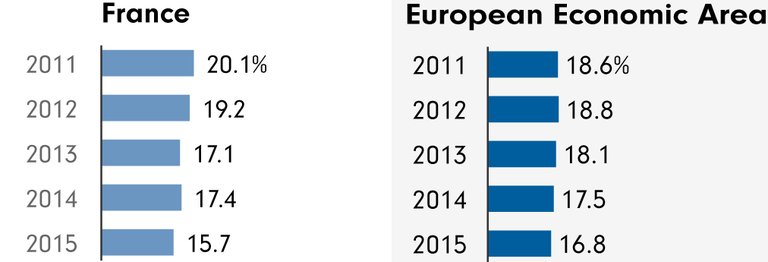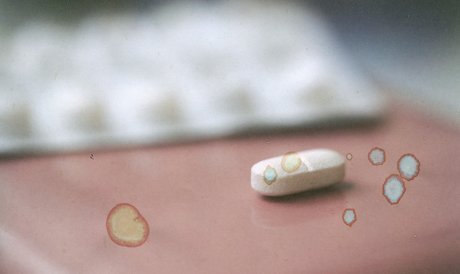
France
The emergence of bacteria that cause infections in humans which are resistant to treatment with antibiotics has become a global public health concern.
Infections by multi-resistant germs are estimated to kill around 25,000 people in the EU every year, with some experts estimating that this number will increase dramatically over the coming decades.
But the situation between each member states varies hugely. Some countries have strict rules around antibiotic consumption and some don’t. The EU bodies responsible for addressing the problem recognise that there is no one-size-fits-all solution. This is why it is important to understand the situation in individual countries.
In many of the datasets regarding levels of antibiotic consumption in European countries, France falls second only to Greece. According to a study conducted by the European Centre for Disease Prevention and Control (ECDC), about five packs of antibiotics per 1,000 people are prescribed every day in France outside of hospital settings. This is almost double the EU average.
Antibiotic consumption in humans
Daily doses per 1000 inhabitants per day

Source: ECDC
Antibiotic resistance in France
France is among a group of EU countries where antibiotic resistance is still noticeably increasing. Although the number of methicillin-resistant Staphylococcus aureus (MRSA) infections is now falling, other pathogens such as E. coli or K. pneumoniae are increasingly becoming immune to the active ingredients of the antibiotics used to treat them.
MRSA prevalence
Percent of hospital Staphylococcus aureus isolates that are resistant to methicillin

Source: ECDC
Since 2002 the French health authorities have been trying to teach doctors and patients about antibiotics. These annual campaigns are showing signs of having an effect. According to a recent study by the national health authority, antibiotic prescribing in hospitals declined for the first time between 2013 and 2014, by just under two per cent.
Meanwhile, the top Parisian health authority is putting pressure on both private and public hospitals. Once a year every hospital undergoes a week-long inspection. The problems found during the inspections are listed in an online database – for example, if surgical equipment has been disinfected negligently, or a patient's relatives have not been adequately informed about their status. Progress has been made: over the past ten years, the number of the compulsory disinfectant procedures – which are obligatory by law – undertaken in the hospitals have increased from around 50 per cent to 80 per cent. Nevertheless, some hospitals still receive a "red" rating in this category.
Hospital infections
The ECDC also records healthcare associated infection (HAI) prevalence in European hospitals. This data shows what percentage of hospital patients have a hospital acquired infection – a large proportion of these infections are preventable, and are caused by poor hygiene.
The European average for HAI prevalence was 6.12%. In France, this number was below the average at 4.9%.
Livestock antibiotic consumption
A European Medicines Agency (EMA) report from 2016 covering data until 2014 concluded that France had a total of 7,120,000 PCU (in tonnes) of livestock. The EMA measured this in Population Correction Unit, or PCU – the estimated weight at treatment of livestock. This is a standardised measurement across Europe to help compare different data sets. In total, there was 58,931,000 PCU (in tonnes) of livestock across 29 European countries in 2014.
In the same year, 761.5 tonnes of antibiotics were sold for use in food producing animals in France. This is the equivalent of 107 mg of antibiotic per PCU, the 10th highest out of the 29 countries who provided data.
Other hospital indicators
An ECDC report which looked at infections and antibiotic use in European hospitals in 2011-12 reported on hospitals indicators like the use of alcohol hand rub and the number of single beds.
These indicators are important because they are measures that help to keep the rate of hospital acquired infections low, which helps to counter resistance – because the fewer infections patients acquire, the fewer antibiotics are used, and the less resistance can develop.
Single rooms are important because they can be used to isolate patients who have infections, preventing the infection from spreading. The amount of alcohol hand rub used indicates how well hospital staff are disinfecting their hands and following hygiene procedures – the more hand rub used, the less chance infections have of spreading.
French hospitals’ use of alcohol hand rub was average for the European countries, with 25.28 litres of hand rub used per 1,000 patient days compared to the European average of 25.64 litres.
France had the highest proportion of hospital beds that were in single rooms of all the European countries that the ECDC gathered data from. Over half – 51.58 per cent – of hospital beds were in single rooms – compared with a European average of just 15.29 per cent.
The ECDC report also looked at the number of doctors and nurses in each hospital who were dedicated to infection prevention and control. The European average was a full time equivalent of 0.97 nurses dedicated to infection prevention and control per 250 hospital beds, France was above this with 1.16 infection nurses per 250 beds. The number of infection doctors in France was average for the European countries, with 0.39 infection doctors per 250 beds in France and a European average of 0.38.
-

-

Seven things YOU can do to combat antibiotic resistance
Because we can all help in the fight against resistant bugs.
-

A new TV documentary reveals that superbugs are multiplying in the polluted wastewater flowing from pharmaceutical plants in India
-

Less than half of antibiotics used in hospitals worldwide are prescribed appropriately, confirms a comprehensive new study
-

Projected death toll from drug-resistant superbugs 'based on incomplete data and flawed assumptions'
-

More antibiotics, more resistant germs
Antibiotic consumpion varies largely between countries
-

Lost life
More than two million Europeans are infected in hospital every year, according to the most comprehensive study to date
-

Antibiotics for colds
In France, antibiotics are prescribed carelessly and resistances are increasing
-

Fear of Bacteria
Why resistances against antibiotics has rather become an overestimated than an underestimated problem.
